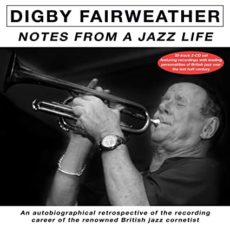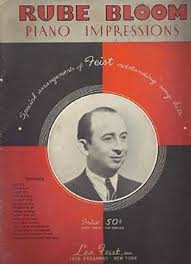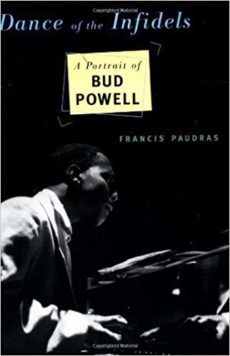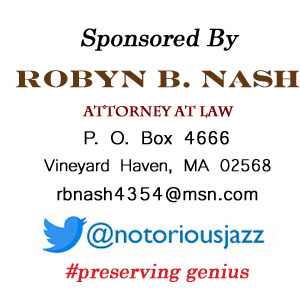
Daily Dose Of Jazz…
Digby Fairweather was born Richard John Charles Fairweather in Rochford, Essex, England on April 25, 1946. Before becoming a professional musician, he was a librarian, which embarked him on a lifetime interest in jazz bibliography and archiving.
In 1971 he led his first band, Dig’s Half Dozen, and recorded in 1973 with Alex Welsh. Four years later he was a member of the band Velvet with Ike Isaacs, Len Skeat, and Denny Wright, then a member of the Midnite Follies Orchestra and the Pizza Express All-Stars.
The early 1980s saw Fairweather starting a band that performed music by Nat Gonella. He worked as a sideman for George Chisholm, Alex Welsh, Tiny Winters, and Brian Priestley. Through the 1980s and ’90s he led the Jazz Superkings, the Great British Jazz Band, and the Half Dozen.
From 1992 to 1998 he pursued a parallel career as a broadcaster on BBC Radio and Jazz FM, occasionally deputizing Humphrey Lyttelton on his show Best of Jazz and successively presenting Jazz Parade and Jazz Notes. He was also part of the Salute to Satchmo.
Fairweather and Stan Barker started the Jazz College charity to introduce improvisation in schools. He established the Association of British Jazz Musicians and the National Jazz Foundation Archive. He wrote Jazz: The Essential Companion in 1987 with Brian Priestly and Ian Carr. In 2000 it was renamed The Rough Guide to Jazz.
Digby’s Half Dozen toured and recorded with singer George Melly, and in the later years of his career from 2003 to 2007. Apart from his playing and group leading, Fairweather wrote the book How to Play Trumpet. In 2016, founded The Jazz Centre (UK), a charity whose aim is to promote, preserve and celebrate the culture of jazz in all its forms.
Cornetist, author, and broadcaster Digby Fairweather, who has recorded nineteen albums as a leader, published four books and has received several awards for jazz, continues his career as a musician.
More Posts: author,bandleader,broadcaster,cornet,history,instrumental,jazz,music

Daily Dose Of Jazz…
Reuben Bloom was born on April 24, 1902 in New York City, where he learned to play the piano. During the 1920s he wrote many novelty piano solos which are still well regarded today. He recorded for the Aeolian Company’s Duo-Art reproducing piano system various titles including his Spring Fever.
In 1927 Rube had his first hit with Soliloquy and his last hit was “Here’s to My Lady” in 1952, which he wrote with Johnny Mercer. In 1928, he made a number of records with Joe Venuti’s Blue Four for OKeh Records, including five songs he sang, as well as played piano.
He formed and led a number of bands during his career, most notably Rube Bloom and His Bayou Boys. They recorded three records in 1930 that are considered some of the best made during the early years of the Depression. The Bayou Boys was an all-star studio group consisting of Benny Goodman, Adrian Rollini, Tommy Dorsey and Mannie Klein. At other times, Bloom played with other bands, such as with Bix Beiderbecke and Frankie Trumbauer in the Sioux City Six as well as his continued frequent work with Joe Venuti’s Blue Four.
During his career, Rube also worked with many well-known performers, including Ruth Etting, Stan Kenton, Jimmy Dorsey. He collaborated with a wide number of lyricists including Ted Koehler, and Mitchell Parish. During his lifetime he published several books on the piano method.
Bloom’s I Can’t Face the Music with lyrics by Ted Koehler was recorded by Ella Fitzgerald on her 1962 Verve release, Rhythm is My Business, in a fabulous swing/big band version with Bill Doggett. Some of his best-known composition collaborations with lyricists were Day In, Day Out and Fools Rush In (Where Angels Fear to Tread) with lyrics by Johnny Mercer; Give Me the Simple Life with Harry Ruby; and Maybe You’ll Be There with lyrics by Sammy Gallop.
Pianist, vocalist, songwriter, arranger, bandleader, recording artist, and author Rube Bloom passed away on March 30, 1976 in his hometown.
More Posts: arranger,author,bandleader,history,instrumental,jazz,music,piano,recording artist,songwriter,vocal

Daily Dose Of Jazz…
Donald Percy Rendell was born in Plymouth, England on March 4, 1926 and raised in London where his father, Percy, was the musical director of the D’Oyly Carte Opera Company; his mother Vera was also a musician. He attended the City of London School, to which he gained a choral half-scholarship and during school was evacuated during the Second World War to Marlborough College, where he heard jazz for the first time.
Rendell began playing the piano at the age of five but switched to saxophone in his teens. While working for Barclay’s Bank, he left to become a professional musician and began his career on alto saxophone but changed to tenor saxophone in 1943. During the rest of the 1940s, he was in the bands of George Evans and Oscar Rabin. Beginning in 1950, he spent three years in the Johnny Dankworth Septet and performed with Billie Holiday in Manchester, England, before playing in the bands of Tony Crombie and Ted Heath.
After touring in Europe with Stan Kenton, he played in Cyprus with Tony Kinsey, then Don was a member of Woody Herman’s Anglo American Herd in 1959. During the late 1950s and early Sixties, he led bands, including one with Ian Carr that lasted until 1969, one with Barbara Thompson in the 1970s, and as the sole leader in the 1980s and 1990s. In particular, the Rendell-Carr Quintet gained an international reputation, performing in France at the Antibes Festival and was the Band of the Year for three years in succession in the Melody Maker poll. He performed in festivals in England and France as well as working with Michael Garrick and Brian Priestley.
He taught at the Royal Academy of Music for three years in the early 1970s, at the Guildhall School of Music and Drama beginning in 1984 and wrote instruction books on flute and saxophone. Don Rendell, who played soprano saxophone, flute, clarinet and was also an arranger, passed away after a short illness at the age of 89 on October 20, 2015.
More Posts: arranger,author,bandleader,clarinet,educator,flute,history,instrumental,jazz,music,saxophone

Daily Dose Of Jazz…
Harry Dial was born on February 17, 1907 in Birmingham, Alabama who became one of the classic drummers of the early jazz world. His specialty was keeping time behind artists known for their fun and pep. In fact, a glance at Dial’s discography is something like a partial scan of the most entertaining albums of all time, because such a list would surely include sides by two guys named Louis, Armstrong and Jordan, as well as Fats Waller and Ella Fitzgerald.
Harry was a solid, energetic drummer who pushed the beat forward without cluttering the airspace. His use of the sock cymbal and his fat, marching band snare drum sound are often imitated. He was also one of the rare breeds of singing drummers, the vocal side of his talents usually only exposed when he was in charge of the band. He was allowed to make comments on records with Fats Waller, the best example of which is the introduction to the upbeat Don’t Let It Bother You.
Dial’s career as a bandleader included a series of sides for Vocalion beginning in 1930. The group, whose recordings included the deadly “Poison,” was known as Harry Dial’s Blusicians, and included players such as banjoist Eursten Woodfork, trumpeter Shirley Clay, and the fine alto saxophonist Lester Boone. Some of this material has been reissued on the compilation Chicago 1929-1930: That’s My Stuff.
He was already recording with Armstrong around this time and began cutting tracks with Waller as a member of Fats Waller’s Rhythm before the middle of that decade. It might have taken him an additional ten years to master the art of playing the maracas since he seemed to find a way to include the delicate shakers on just about every funny style of music he played with Jordan beginning in the mid-’40s when he joined the Tympany Five.
In the late ’40s, he took another crack at recording under his own name, producing “Prince’s Boogie” for Decca with one of the earliest versions of the catchy “Diddy Wah Diddy” on the flipside. Dial liked to write as well, beginning with a song entitled “Don’t Play Me Cheap,” recorded by the famous Armstrong. His songs were also recorded by the merely infamous, a category that would not exist if it didn’t include a singer named Bea Booze, who cut Dial’s “Catchin’ as Catch Can” for Decca in 1942.
Many years later, the drummer published his All This Jazz About Jazz: The Autobiography of Harry Dial. The dapper, suave musician would have felt it important that he is most certainly not the Harry Dial who made it into the Guinness Book of World Records by claiming to have gone 78 years without bathing. Drummer Harry Dial passed away on January 25, 1987 in New York City.
More Posts: author,bandleader,drums,history,instrumental,jazz,music

Daily Dose Of Jazz…
Francis Paudras was born on January 21, 1935 in Chilly-Mazarin, France. While in his early 20’s then an amateur pianist, Francis became a keen follower of jazz in Paris and in the early 1960s he befriended the ailing, alcoholic Bud Powell, one of the premier musicians of be-bop, who had gone to France with his wife, Altevia Edwards, and her son, Johnny. In 1963, with the help of the musician Johnny Griffin, he checked Powell into a hospital, but by then a custody battle emerged between him and his wife.
Powell was diagnosed with tuberculosis, and for the next year, Francis was his caretaker. When Powell was booked for a six-week engagement at Birdland in Manhattan, in December 1964, Mr. Paudras was his advance man, creating a wave of publicity. The run opened to stunning reviews but quickly worsened as Powell slid back into drinking. At the end of the engagement, Powell decided to remain in New York, where he died in 1966.
Paudras later became a friend and supporter of other musicians, including Bill Evans and Jacky Terrasson. Though his devotion to Powell eventually turned into a personal disappointment, he memorialized his friendship in his 1986 book, La Danse des Infideles that was ultimately adapted for the film Round Midnight that same year. He also co-author, with Chan Parker, of ‘To Bird With Love, a book of photographs published in 1981. He also issued recordings of Powell and others through the years, including some he made privately in the early Sixties.
Commercial artist, author, collector of jazz-related artifacts and patron of jazz musicians Francis Paudras passed away by committing suicide at his castle on November 26, 1997 in Antigny, France. He was 62.
More Posts: artist,author,collector,history,instrumental,jazz,music,patron





